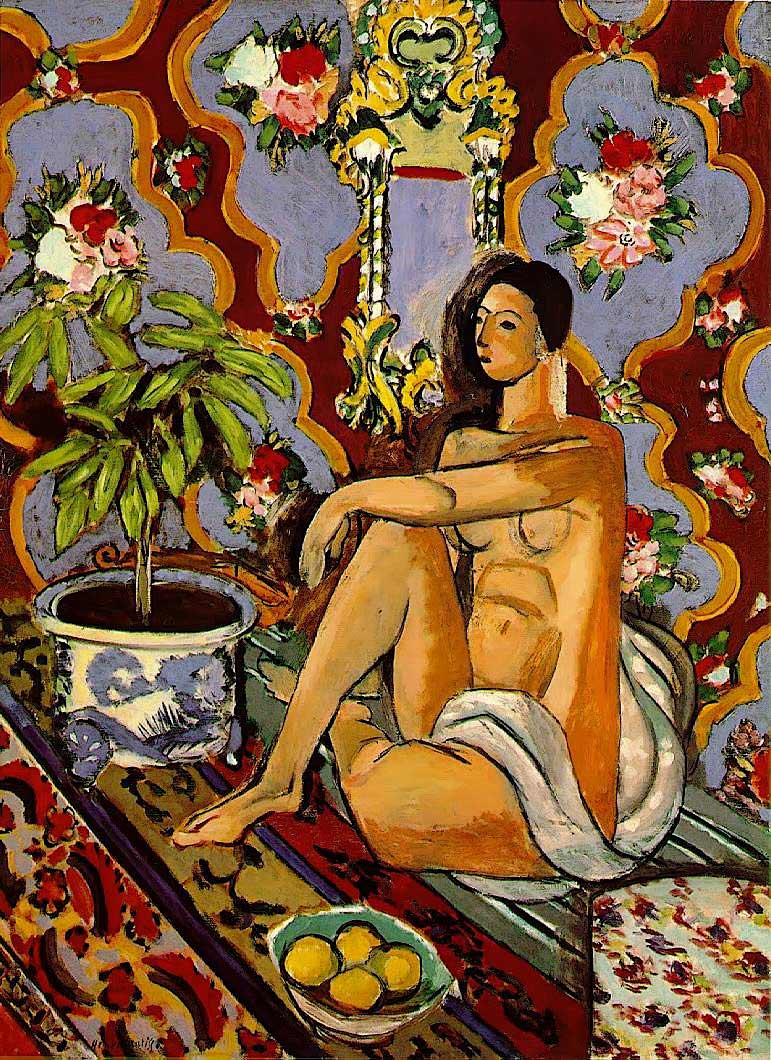Near the end of his life, Henri Matisse remarked that “I am made up of everything that I have seen.” A new exhibition at the Royal Academy, “Matisse: His Art and His Textiles”, explores just one part of the spectrum of his visual experiences. Modest in scale, if not in ambition, the show examines Matisse’s lifelong fascination for coloured fabrics – for the fabrics of French haute couture and interior decoration, for rugs and throws and carpets from the East, for Rumanian blouses and Byzantine prayer mats, for Kufa fabrics from the Congo, and much more besides – and seeks to prove that it is the unbroken thread running through all his oeuvre, like Ariadne’s thread through the labyrinth.
The exhibition displays some eighty works by Matisse’s own hand, including paintings, drawings, lithographs and collages, all of which give great prominence to brightly coloured, densely patterned fabrics of one sort or another. In many cases, these works are displayed alongside the original textiles from the vast “working library” of carpets, curtains, coverlets, drapes, costumes, Arab embroideries and pierced screens that Matisse accumulated, from his youth in Paris to his maturity and old age in the South of France. The raw materials on which his eye, his imagination and his hand worked, are thus present, together with their transmutations in painting.
The show opens with some cases filled with books of late nineteenth-century silk-samples, testifying to the inventiveness of the textile designers among whom the young Matisse grew up in Picardy. The painter was born in French Flanders in 1869 and brought up in the textile town of Bohain-en-Vermandois. He came from a family of weavers, and his upbringing coincided with a boom in the market for luxury silk goods, fuelled by the hedonistic determination of Parisian high society, in the...

Matisse: His Art and His Textiles, at The Royal Academy 2005
06-03-2005

